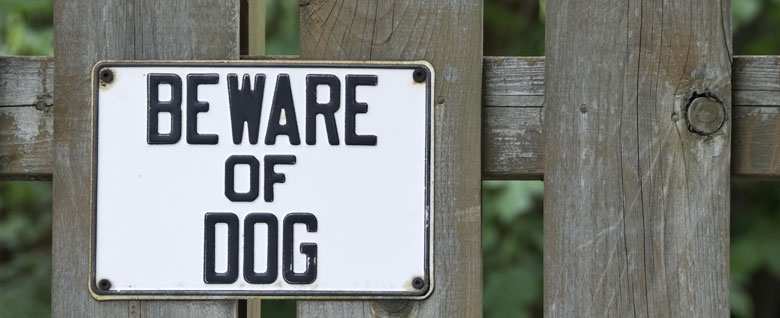Britain is considered to be a nation of dog lovers, and the best estimate is that there are approximately nine million dogs in the UK, with 26% of the population owning one as a pet.
Dog owners are responsible for making sure that their dogs are well-trained and socialised from a young age, to reduce the risk of bad behaviour, such as biting.
Although dog bite incidents are relatively low in light of how considerable the UK dog population is, and whilst we may not envisage that a dog can become aggressive, it is important to bear in mind that all animals can be temperamental, and that injuries as a result of a dog’s behaviour can arise for a variety of reasons. This is not necessarily confined to dog bite injuries, as if a dog were to jump up at you in an aggressive manner and cause you to fall and become injured, this could also be categorised as a “dog attack”.
Suffering an injury caused by a dog can be a distressing time for anyone, resulting in both physical and psychological effects, the most common injuries being finger amputations, nerve damage and scarring. However, for anyone looking to bring a claim for such injuries, they should be aware that this is a complicated area of law, and that cases such as these are not always clear-cut, nor are they easy to pursue.
Like all personal injury claims, it depends very much on the specific facts of the case. The characteristics of dogs, such as their ability to do unexpected things, or to demonstrate uncharacteristic behaviour, means that the owner could not always be expected to predict what their pet would do. For instance, a potential defendant may question how they as a dog owner, can be considered negligent, when their pet has never previously shown any inclination of hostility or aggression towards other people.
For the majority of dog bite claims, the identification of the possible defendant should be easy to ascertain, based both on the accident circumstances and, especially now since the recent change in law, making it mandatory for all dogs to be microchipped. A good starting point is that under the Animals Act 1971, a dogs ‘keeper’ is the person who owns the animal or who has it in their possession at the time of any incident, and so, can be held responsible for the actions of their dog.
However this is not clear cut. For example, a person walking a relative’s dog may be the temporary “keeper” of that animal, but would they necessarily have intimate knowledge of its behaviour and temperament? Before strict liability can be attached, it needs to be identified whether;
- The injuries inflicted were of a type which the animal would be likely to cause, unless adequately restrained, or if caused would be considered severe
- The likelihood of the damage caused, or its severity was due to characteristics of the particular animal, which are not commonly found in animals of the same species, other than at particular times or in particular circumstances
- That the ‘keeper’ was aware of the characteristic as detailed above
What to do if injured by a dog
Seek medical attention as soon as possible. Appropriate treatment should be sought, and this will ensure that a contemporaneous record of the incident is noted down either by the hospital or within your GP records.
Obtain the details of the dog owner and ascertain if they have insurance cover. Many dog owners will have pet or house insurance, which would cover the claim.
Report the accident to the police. This is an appropriate course of action if the incident is severe or there are concerns that the animal concerned could attack again.
Make a detailed account of the accident circumstances. Write down or record an accurate account of the incident as soon as possible, as your legal representative will require as much information as you can provide, in order to pursue your claim.
Obtain the name and contact details of any witness to the accident. Your solicitor may want to obtain a written statement from any passers-by, or from anyone who may know the characteristics of that particular dog which caused your injury.
- Take photographs of your injuries. Do this as soon as you are able to, and ensure that you take regular photographs throughout the duration of your claim, to monitor the progression of scarring, for example.
The majority of dogs may never attack, and the majority of people will never have to experience this type of trauma, but if you are ever injured as a result of a dog’s behaviour, it is crucial to seek specialist legal advice right from the start. Stephensons have dealt successfully with many dog attack cases, and our team would be happy to assist with your enquiries if you have been the victim of this type of incident. Call us on 01616 966 229 is you would like to discuss a potential claim with one of our specialists.




Comments